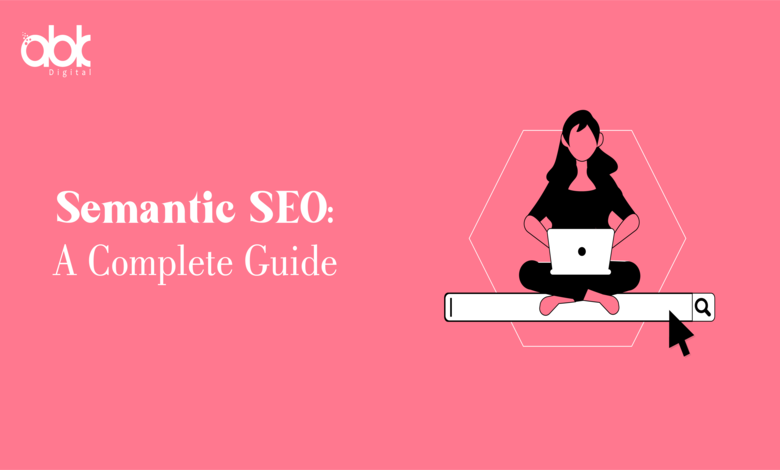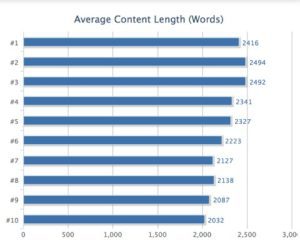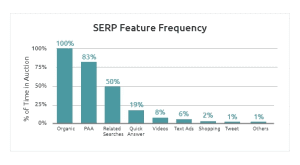
Introduction
Some believe that semantics is the future of SEO, but do you know what it means exactly? The semantic SEO technique can help in creating high-quality content that performs very well on Google.
The field of SEO (Search Engine Optimization) is constantly evolving, and you must adapt accordingly. There seem to be new tricks and techniques to learn that can increase a site’s rating on Google’s SERP (Search Engine Results Page). Semantic SEO is one of the most recent strategies.
Search engines like Google and Bing have been using semantic analysis to analyze human language and provide users with the more relevant search result. It has begun to analyze search queries in terms of intent, context, and meaning rather than just a combination of letters and numbers.
This article will explain what semantic SEO is. And how it impacts search engine rankings. So, let’s begin.
What is Semantic SEO?
It means identifying the user’s intent in a particular context, scanning through hundreds of billions of web pages, and providing the best possible answer to the query.
Semantic SEO is the presentation of all the related information in response to search queries. It simply means creating content around topics instead of plain keywords.
Semantic SEO is an SEO optimization approach. The main difference between semantic SEO and traditional SEO is that it is focused on topics and entities rather than particular keywords. This simply indicates that you should not target particular keywords for SEO, but rather keyword clusters or groups.
Benefits of Semantic SEO
Although semantic SEO techniques need extra time and effort, the benefits are enough.
- More chances of keyword rankings in organic search.
- The content quality signals have improved for Google crawlers
- Searchers recognize your brand, knowledgeable and authoritative
- Facilitating Google to see your brand as a distinct entity with expertise in core areas
- Features such as “Passage Ranking” or “People Also Ask” are available
- Further possibilities for internal linking
- Keeping people on your website for long durations instead of returning to Web search
Site owners can experience considerable benefits in their overall SEO performance by creating semantically and topically rich content. Now, as you can see the benefits, let us see how to use Semantic SEO for higher ranking.
How to use Semantic SEO for better ranking?
Keyword Cluster Optimizing
Google does not rely just on one keyword per page. You should fine-tune website pages for numerous keywords inside the same semantic cluster.
Keyword clusters are collections of terms with similar semantic relevance. Optimizing these terms will increase the number of keywords that appear in Google search results for your site content and make it more relevant.
Keyword clustering takes advantage of Google’s excellent semantic skills to increase its ranking position for numerous keywords mentioned in the content. Google already ranks our landing pages for a variety of keywords. This means that organic clicks are more likely to succeed.
In the same manner, Topic clusters, as opposed to keyword clusters, are concerned with more than one piece of content. And they fulfill multiple goals like:
- Improves semantic SEO signals and relevance first.
- It helps improve the overall number of keyword rankings.
- And aids in developing your website as an authority in “link building.”
Mention Synonyms and Related terms
Google uses NLP (Natural Language Processing) like BERT and LaMDA for responding to search queries. And such highly improved AI technology does not need keyword stuffing in the content to rank your content.
Google’s semantic analysis can detect synonyms and related phrases.
There are no ranking factors, but incorporating them into the content via h1 to h5, page title, meta description, and graphic alt text can increase the topical depth and sematic signaling while also making the information simpler to read and insightful for searchers.
Topical Depth in Quality and Length
This tactic is to lengthen your content to provide an in-depth description of the topic. The length of content is not an official ranking criterion but is more likely to display higher semantic signals.

(Image source: quicksprout)
From the graph above, you can see that most blogs have 2000 words. However, just using keyword stuffing and repetition to increase article length is foolishness. Instead, lengthen your content to be more particular and sophisticated in the information you present on the topic.
Utilize Structured Data
Structured data, while not typically considered a semantic SEO method, is concerned with expressing the meaning of content directly to Google crawlers. Structured data identifies the function, object, and description of the content.
For instance, by using the product schema on the product page, you may directly communicate to Google a difference in key details. Details such as type, size, colors, and price are shown.
When your web pages are connected with other topically rich or semantically relevant content, search engines can easily determine their purpose and value.
Respond to the “People also ask”
This is indeed a great way of increasing your content’s depth by answering other questions related to your primary keyword.
According to the latest research by growbydata, the PAA feature was present in more than 80% of the search queries on the Google SERP.

Answering these PAA (people also ask) questions in your web content can boost your semantic signals and facilitate your website to rank high in search results. Web sites can show up in PAA queries even if the search result is not on the first page.
Content optimization tools
The content optimizer tool does the ideal job of identifying all semantic relevant phrases for you, such as SEMrush, Grammarly, and DemandJump. To find the most significant phrases, an SEO content writer must focus on the content ranking on the first page.
The same job may well be done in seconds by content optimization tools.
You could increase the topical depth and thus practice semantic SEO by adding certain topics, phrases, and queries to the page.
Also, read Most Important SEO KPIs You Should Track.
Conclusion
Semantic SEO covers a wide range of techniques and tools, but they all focus on meaning, language, and search intent.
Seo’s team can use these above-listed methods to highlight the semantic signals that Google algorithms have been designed to detect.
Thereby, Google will identify your website not just with a few keywords, but also with numerous wider ranges of topics – and the hundreds of keywords and search queries associated with them. And to make semantic SEO work for your business, you can get help from the local SEO services to make your website rank better.
So, if you want to give your website more depth and have it rank higher, get in touch with us and we’ll show you how semantic SEO may assist.





